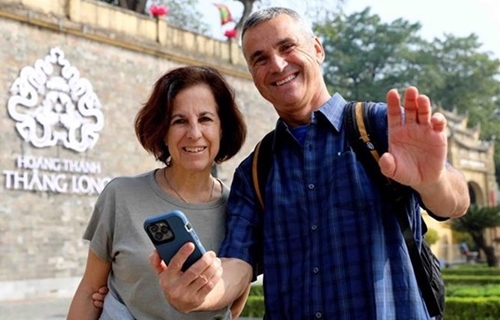The report stressed that January’s data showed Vietnam continues to face difficulties in trade and the inflationary pressure of increasing prices.
However, in spite of slowing trade, there are still pockets of resilience in Vietnam’s economy, and tourism will be a key one in 2023.
Following its re-opening last March, Vietnam’s domestic tourism has been soaring, easily surpassing its 2022 target of 60 million to over 100 million tourists.
    |
 |
|
Foreign tourists visit Vietnam |
Meanwhile, international tourism, which previously accounted for 60% of tourism receipts, saw a tepid recovery post COVID-19, with tourist arrivals reaching 3.6 million, only 20% of 2019’s level.
But there are good reasons to expect a more meaningful recovery, in particular after China’s reopening, HSBC said, adding that a 50% - 80% return of Chinese tourists can be achievable, if flight constraints can be solved and visa entry requirements can be eased further.
At present, one of Vietnam’s most noticeable weaknesses in the tourism sector is the lack of visa exemptions for major markets including mainland China, the U.S. and Australia. Visa exemptions for some European markets allow travelers to stay up to only 15 days.
Officials are considering an extension of the visa waiver period to 30 days and the issuance of electronic visas for citizens from all markets.
Another way to facilitate tourism is not just by improving its traditional infrastructure, but also diversifying tourism products. Sports tourism is included in the tourism industry vision from the Vietnam National Administration of Tourism (VNAT). It can also help attract high-spending travelers, noted HSBC, one of the largest banking and financial services institutions in the world.
Source: VNA